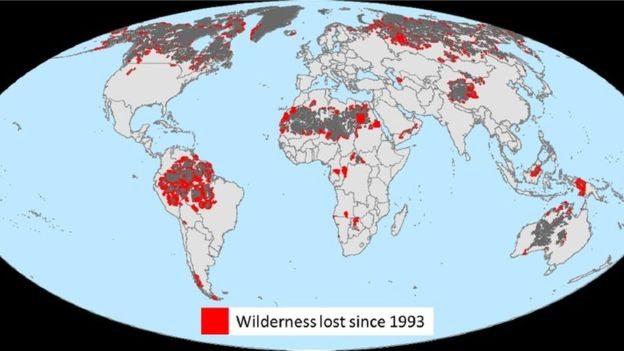Scientists believe more than 2,000,000 square miles of wilderness have been lost in the last 20 years.
New research shows "alarming losses" of wilderness areas in the past two decades. Scientists as the World Conservation Society made this discovery by comparing new wilderness coverage maps to those created in the early 1990s. The difference is stark.
These maps, like the one below, provide a glimpse of the globe with shaded areas. The shaded areas highlight wilderness areas lost in the last 20 years.
The examination suggests that an estimated 2,050,000 square miles of wilderness has been lost. In the study, wilderness is classified as area free of large-scale human interaction. Currently, around 20% of the world is covered by landscapes that meet this criteria. Water areas are not included in this figure. Not surprisingly, the majority of wilderness areas can be found in North America, north Asia, north Africa, and Australia.
So, how does this happen? James Watson argues these areas "are completely ignored in environmental policy." Watson is a professor at the University of Queensland in Australia. He is also a member of the US Wildlife Conservation Society in New York. He goes on to say, "We probably have one to two decades to turn this around."
Scientists are encouraging a "rewilding" of these native areas. Also, they suggest even small back country and forest areas begin a process of regular examination. Rewilding is the process of restoring these areas back to their original condition and use.
Like what you see here? If so, Click here to read more great hunting, outdoor, and shooting articles by Reid Vander Veen. Also, check him out on Twitter @ReidVanderVeen and on Instagram.
NEXT: BABY BOBCATS CLIMB INTO TREESTAND WITH DEER HUNTER





